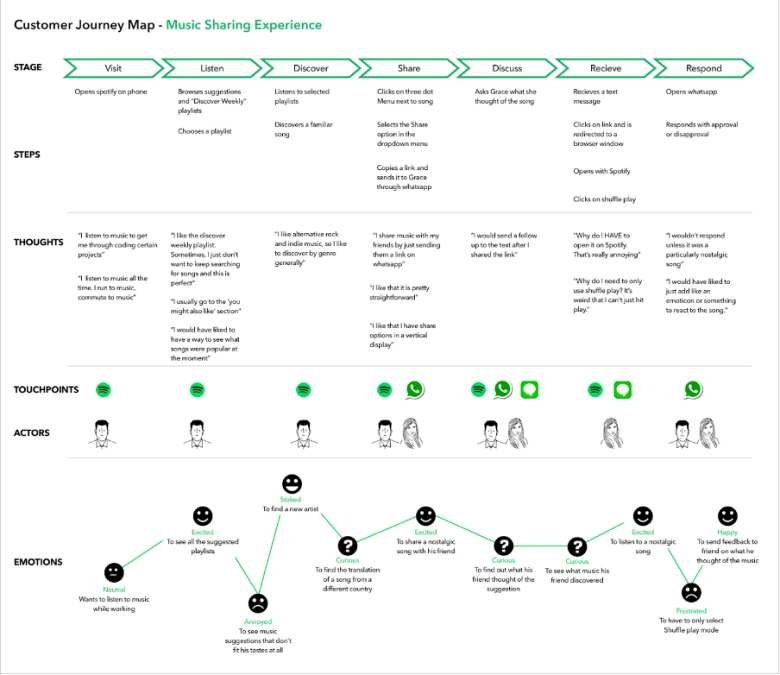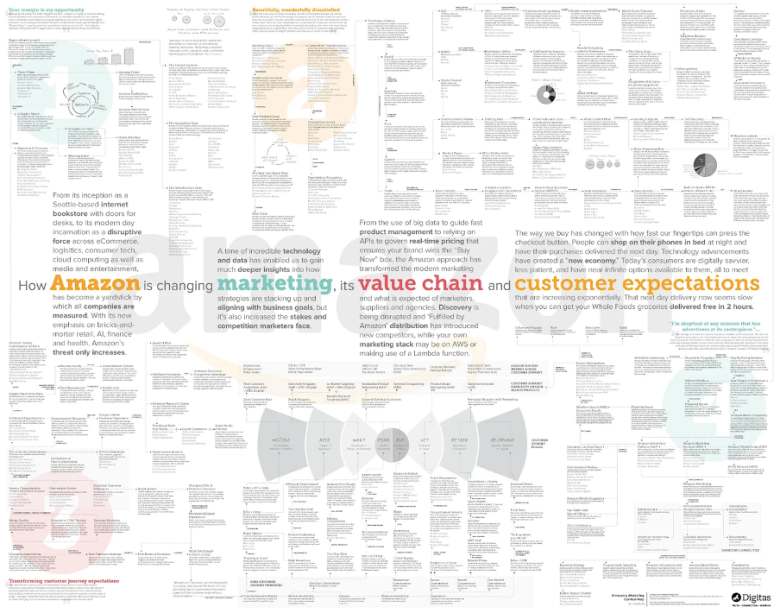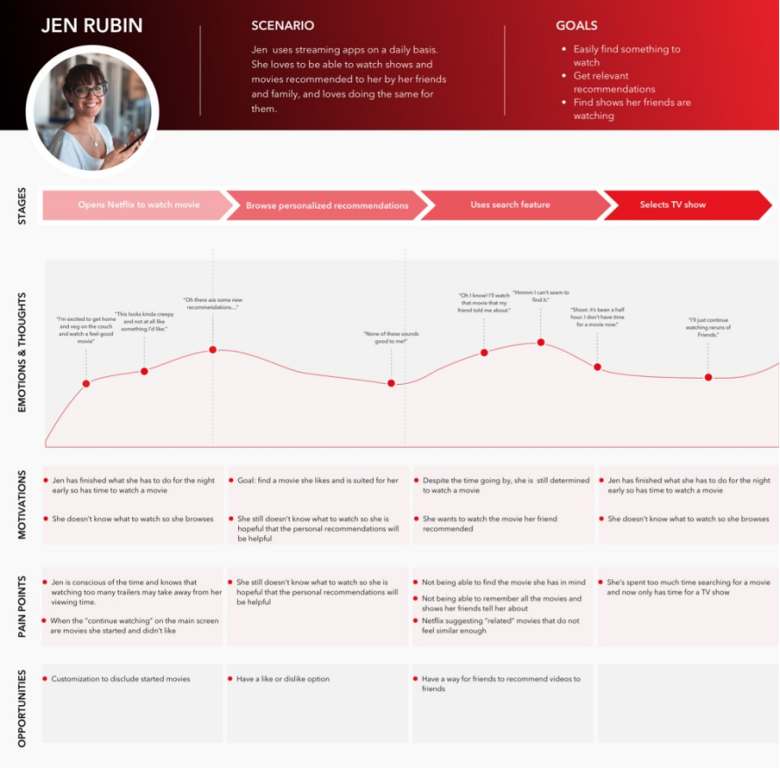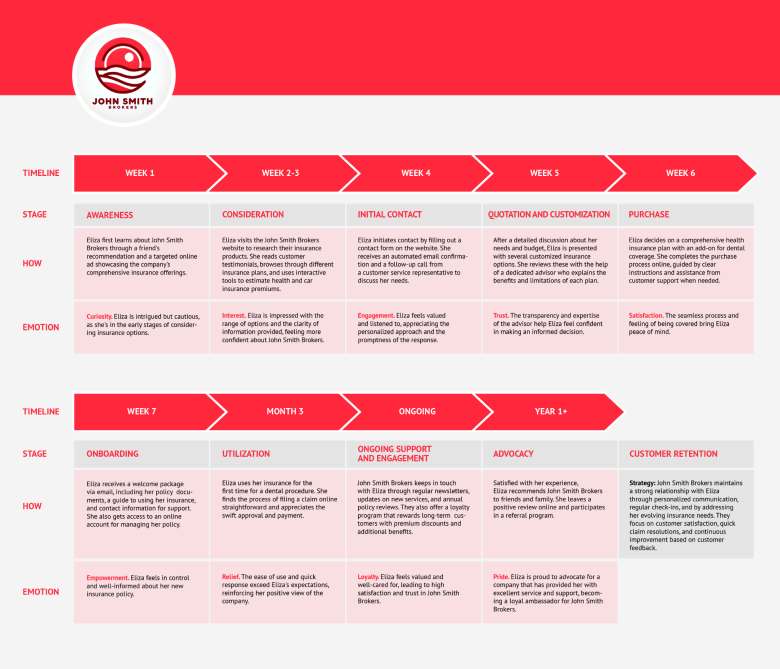Customer Journey Map Templates (+ Examples and Free AI Tool)
Looking for copy-and-paste customer journey map templates? We’ve got something even better. Use our free AI-powered Customer Journey Map Generator to instantly draft a customized map based on your exact business, customers, and touchpoints.
Just answer a few quick questions, and our generator will create a detailed, scannable map that aligns your marketing with your customers’ real-world journey.
How Do I Use The Customer Journey Map Generator?
It’s simple. Here’s how to get started: Answer a few guided prompts about your business, audience, and touchpoints. We’ll give you a custom journey map, instantly and free.
The more detail you provide, the smarter the output. Your final customer journey map will reflect real behavior, pain points, and emotions, giving you a powerful asset to align teams and improve engagement.
What Is a Customer Journey Map, and Why Do I Need One?
A customer journey map is a visual breakdown of how your audience interacts with your brand—across every touchpoint, from first impression to loyal repeat buyer.
It helps you see the experience from your customer’s perspective: what they think, feel, want, and do at each stage.
Why does this matter? Because great marketing isn’t built on guesses, but on real insight.
A clear journey map reveals gaps, friction points, and opportunities you might otherwise miss. It aligns your team, sharpens your strategy, and makes every campaign more relevant—and more effective.
Think of it as your marketing GPS.
What AI Prompts Help Improve A Customer Journey Map?
You have a map. Now use follow-up prompts to refine it with AI assistance. The following examples will help you get the most impactful results.
- Identify touchpoints: Help me identify all the touchpoints a customer encounters throughout their journey.
- Improve tone and style: Rewrite this section to adopt a more formal/ playful/ professional tone.
- Define pain points: Suggest potential pain points that customers might encounter during their journeys.
- Enhance customer emotions: Provide suggestions on how to evoke specific emotions at each stage of the customer journey.
- Optimize content placement: Recommend where to place relevant content or information to improve customer engagement.
- Refine user interactions: Suggest ways to simplify or streamline customer interactions with our digital platforms.
- Personalize the experience: Propose methods to tailor the customer journey based on individual preferences or demographics.
- Address customer needs: Help me identify the specific needs that customers have at different stages of their journeys.
- Identify conversion opportunities: Highlight potential opportunities to convert customers at various touchpoints.
- Analyze customer feedback: Assist in analyzing customer feedback to identify areas of improvement or satisfaction.
These prompts turn your journey map into a strategic tool, not just a static graphic.
Customer Journey Maps: Real-World Examples
Top brands use detailed journey maps to drive customer experience and revenue. Here are a few examples worth studying.
Spotify
Spotify has mastered customer engagement by mapping out a user’s journey from app launch to music discovery and sharing.

Key features of their map:
- Touchpoints: App use, recommendations, shared playlists.
- Emotions: Curiosity, surprise, delight.
- Goals: Seamless discovery and sharing.
Their journey map informs UX decisions and content delivery at every stage.
Amazon
Amazon’s customer journey map is dense but brilliantly structured.

Each phase includes:
- Clear stages: Browsing, purchase, fulfillment, post-sale.
- Metrics: Success KPIs for each step.
- Data loops: Customer behavior feeds future recommendations.
It’s a strategic blueprint tied to growth and efficiency.
Netflix
Netflix adds “motivations” and “opportunities” to every touchpoint, using customer personas to shape the customer’s experience.

Here’s how Netflix ties customer elements together:
- Persona: A busy binge-watcher.
- Journey stage: “Rewatching favorite series.”
- Opportunity: Prompt subscription upgrade or premium feature.
This map informs personalization and upsell strategies.
John Smith Brokers
This B2B map is time-based, extending beyond the first year.

Highlights:
- Acquisition stages tied to timeline.
- Check-ins and upsell windows baked in.
- Integrates with CRM for lifecycle marketing.
It’s a perfect example of a sales-led journey map, leaving room for additional upsell opportunities if needed.
What Are The Best Practices For Customer Journey Maps?
To make your journey map useful (not just pretty), follow these proven tips:
- Define journey stages clearly: Map out distinct customer stages from awareness to advocacy.
- Build accurate customer personas: Use research to understand motivations, needs, and behaviors.
- Identify every touchpoint: Capture all online and offline customer interactions for a full journey view.
- Map the emotional journey: Highlight emotional highs and lows to better tailor experiences.
- Analyze pain points: Identify and address friction points at each stage of the journey.
- Use data for validation: Support the map with feedback, analytics, and user research for accuracy.
- Test assumptions with real users: Confirm your insights with direct customer feedback and usability testing.
Take a collaborative approach: Involve teams across departments for diverse insights and alignment. - Visualize for clarity: Design the map to be easily understandable and shareable across teams.
- Keep it current: Regularly update the map to reflect shifting customer behavior and business priorities.
Still have questions? See our FAQ below for more answers.
How Do I Turn My Journey Map Into Campaign Ideas?
A good customer journey map is a campaign generator. Once you understand what your customer is thinking and feeling at each stage, you can craft campaigns that perfectly match their needs.
Here’s how to turn map insights into marketing gold:
- Awareness stage: Use blog posts, videos, or social ads to answer early questions and build trust.
- Consideration stage: Offer comparisons, testimonials, or lead magnets to guide decision-making.
- Purchase stage: Focus on conversion with strong CTAs, time-sensitive offers, or demos.
- Post-purchase stage: Reinforce loyalty with onboarding emails, helpful tips, or upsell opportunities.
- Advocacy stage: Encourage reviews, referrals, or user-generated content.
Treat your journey map like a campaign calendar. Every insight is a starting point, and every pain point is a creative brief.
Media Shower’s AI marketing platform is tailor-made for this task, with customized tools that already know your company and your marketing goals.
Our award-winning creative team can help you turn customer journey maps into high-impact, targeted campaign strategies, in minutes. Click here for a free trial.
Frequently Asked Questions About Customer Journey Maps
What is a customer journey map template?
It’s a visual tool that shows every step a customer takes when interacting with your brand, from first contact to purchase and beyond. It helps you understand what your customers think, feel, and do at each stage.
How do I create an effective customer journey map?
Use personas, identify key stages, map touchpoints, and layer in pain points and emotions. Back it with real data, and keep refining it over time.
What should I include in a customer journey map template?
A solid customer journey map includes journey stages (awareness, consideration, etc.), customer emotions and pain points, goals and actions, touchpoints (digital and human, and supporting data and metrics.
How often should I update my journey map?
At least once a year, or more often if your customer behavior or offerings change quickly.
What’s the role of customer personas?
Personas bring the map to life. They ensure your strategy is grounded in real motivations, not assumptions.
Can journey maps be used for all business types?
Yes. B2B, B2C, SaaS, eCommerce—every business benefits from understanding the full customer experience.
How do I gather data for a customer journey map?
Use surveys and interviews, CRM and website analytics, social listening, and support transcripts to learn more about the customer journey.
Are there tools to help create journey maps?
Yes. Try Media Shower’s free AI-powered Customer Journey Map Generator or tools like SMaply, UXPressia, Canvanizer, or Miro. These tools offer templates, collaboration features, and visual options.
How do I make my journey map actionable?
Tie every stage to goals, content opportunities, and success metrics. Use it to prioritize marketing efforts and improve user experience.


